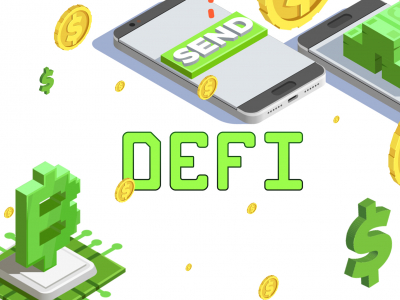Invented back in 2008, bitcoin cryptocurrency has been one of the main topics on fintech agenda throughout the years. CoinFox comprises major events of the period into one timeline.
Basing on the materials gathered by the History of Bitcoin, we have picked the most important stages of bitcoin's development to show that the cryptocurrency has gone through different times, and that its growth has been a complicated multilateral process involving a wide range of technical, financial and legislative issues.
• November 2008 – Satoshi Nakamoto introduces bitcoin – a peer-to-peer electronic cash system. Blockchain is invented.
• 3 January, 2009 – genesis block created, mining difficulty equaling 1.
• 12 January, 2009 – first bitcoin transaction between Satoshi and developer Hal Finney.
• 5 October, 2009 – bitcoin exchange rate established, $1 = 1,309.03 BTC.
• 30 December, 2009 – first difficulty increase.
• 6 February, 2010 – first bitcoin exchange Bitcoin Market established.
• 22 May, 2010 – first real-world bitcoin transaction: two pizzas bought for 10,000 BTC.
• 17 July, 2010 – Mt. Gox exchange established.
• 15 August, 2010 – 184 billion false bitcoins created due to the vulnerability of the system and improper verification.
• 18 September, 2010 – first bitcoin mining pool mines its first block; a new method of mining engaging several users working together and sharing benefits established.
• October 2010 – FATF (Financial Action Task Force) makes its first warning against possible connections between digital currencies and terrorism.
• October 2010 – first public version of OpenCL miner released; the OpenCL miner allows to hash using not only a CPU (Central Processing Unit) but aldo a GPU (Graphics Processing Unit) which has a larger capacity of performing algorithmic calculations.
• 6 November, 2010 – bitcoin market capitalization exceeds 1 million dollars.
• 9 December, 2010 – block generation difficulty exceeds 10,000.
• 2011 – Silk Road, illicit market using bitcoins, established.
• 9 February, 2011 – bitcoin reaches price parity with US dollar.
• 27 March, 2011 – Britcoin, the first marketplace to exchange bitcoins for GBP, opens for trading.
• 5 April, 2011 – BitMarket.eu opens, becoming the first marketplace for exchanging Bitcoins and Euros, along with several other currencies.
• 16 April, 2011 – TIME magazine publishes an article about Bitcoin (“Online Cash Bitcoin Could Challenge Governments, Banks”).
• June 2011 – BTCC (BTCChina) exchange launched.
• 19 June, 2011 – major breach occurs at Mt. Gox, causing leakage of 60,000 accounts’ private information and dropping price of bitcoin down to $0,01 at the exchange.
• 29 June, 2011 – BitPay launches the first bitcoin electronic wallet ever.
• 20 July, 2011 – bitcoin application for IPad released.
• 20 August, 2011 – first Bitcoin Conference and World Expo held in New York.
• 6 September, 2011 – first physical bitcoins, dubbed Casascius Coins, minted.
• 13 October, 2011 – Litecoin launched.
• 13 February, 2012 – TradeHill, the second largest bitcoin exchange, shuts down, citing regulatory problems and the loss of $100,000.
• 27 February, 2012 – Bitcoin Magazine launches with articles about cryptocurrencies.
• 24 April, 2012 – a FBI report entitled “Bitcoin Virtual Currency: Unique Features Present Distinct Challenges for Deterring Illicit Activity” reflects the concerns that Bitcoin payment methods could facilitate illegal transactions for weapons and narcotics.
• June 2012 - Coinbase bitcoin wallet founded in San Francisco, California.
• July 2012 – BoostVC, a Bitcoin startup incubator, launched by Adam Draper.
• 27 September, 2012 - Bitcoin Foundation formed, forming a core development team for the protocol and a body to oversee the digital currency.
• 28 November, 2012 – first halving of bitcoin block reward (50 to 25 BTC).
• 6 December, 2012 – Bitcoin Central becomes the first bitcoin exchange licensed as a European bank.
• 12 March, 2013 – hard fork occurs due do an invalid block accepted by computers running the 0.8.0 version of the software, resulting in double-spending; consensus restored shortly afterwards by downgrading to the previous version, 0.7.
• 18 March, 2013 - the Financial Crimes Enforcement Network (FinCEN) of the US Treasury Department publishes its Application of FinCEN's “Regulations to Persons Administering, Exchanging, or Using Virtual Currencies” defining its stance on virtual currencies.
• 28 March, 2013 – bitcoin market capitalization exceeds 1 billion dollars.
• 10 April, 2013 – bitcoin bubbles, price reaching $266.
• May 2013 – CoinDesk, a cryptocurrency news resource, launched.
• 2 May, 2013 – first bitcoin ATM appears in San Diego, California.
• 18 May, 2013 – PrimeDice.com launches online casino accepting bitcoins.
• July 2013 – bitcoin linked to M-Pesa, a Kenyan mobile payment system.
• 20 August, 2013 – bitcoin ruled “private money” in Germany and becomes tax exempt if kept for more than a year.
• September 2013 – Kraken exchange opens trading with USD, EU and BTC.
• September 2013 – Huobi exchange founded.
• 2 October, 2013 – FBI shuts down illicit marketplace Silk Road.
• 14 October, 2013 – Baidu, a Chinese search engine, starts accepting bitcoins.
• 31 October, 2013 – BitMarket.eu shut down.
• 10 November, 2013 – Subway restaurant in Pennsylvania starts accepting bitcoins.
• 19 November, 2013 – bitcoin price surges to $ 1242.
• 21 November, 2013 – Cyprus University becomes the first university to accept bitcoins for tuition.
• 22 November, 2013 – Virgin Galactic starts accepting bitcoins for space travelling.
• 29 November, 2013 – first Bitcoin Black Friday event held.
• 4 December, 2013 – market capitalization reaches historical maximum of over than 13,8 billion dollars.
• 5 December, 2013 – China’s Central Bank prohibits financial institutions from carrying out bitcoin transactions; price drops below $1,000.
• 6 December, 2013 – Baidu stops accepting bitcoin after the Central Bank’s ban.
• 17 December, 2013 – Chinese Central Bank bans bitcoin-yuan transactions altogether; price falls to nearly $500.
• January 2014 – bitcoin classified as a commodity by Finland.
• 25 January, 2014 – Ethereum announced, claimed to be the “Bitcoin 2.0”.
• February 2014 – Mt. Gox shuts down.
• April 2014 – Brazil announces treating bitcoin as financial assets.
• 6 May 2014 – Bolivia bans bitcoin.
• 25 May, 2014 – mining difficulty exceeds 10,000,000,000.
• July 2014 – Equador bans bitcoin.
• July 2014 – European Banking Authority issues a warning urging financial institutions to stay away from digital currencies until proper regulation is introduced.
• August 2014 – Russian Ministry of Finance starts working on a draft law to prohibit bitcoin.
• 31 December 2014 – CoinFox, cryptocurrency news resource, launched.
• 14 January, 2015 – bitcoin market capitalization falls under $2,5 billion.
• 28 February, 2015 – bitcoin's blockchain infrastructure provider BitFury announces the launch of a 28nm ASIC chip.
• 24 June, 2015 – “Regulation of the Conduct of Virtual Currency Businesses” published in New York, forcing all bitcoin companies to apply for a so-called “BitLicense” in order to prove that they comply with the conditions announced by New York Department of Financial Services.
• September 2015 - US Commodity Futures Trading Commission defines bitcoin digital currency as a commodity.
• October 2015 - “People’s Daily”, the official newspaper of the Communist Party of China, publishes an article stating it impossible “to ignore the revolutionary changes” brought to finance by bitcoin and blockchain in a step viewed by many as an unofficial acceptance of bitcoin by the Chinese government.
• October 2015 – European Court rules bitcoin transactions exempt from value-added tax (VAT).
• October 2015 – Bitfinex and Blade Payments issue a bitcoin debit card able to convert bitcoins into cash at an ordinary ATM without preloading fiat money.
• 13 November 2015 – terrorist attacks in Paris raise discussion in relation to the possible anti-bitcoin measures, given the possibility of terrorists' use of bitcoins.
• December 2015 – first Ukrainian cryptocurrency exchange Kuna succeeds at a crowdsale.
• 1 January, 2016 – mining difficulty exceeds 100,000,000,000.
• 9 February, 2016 – developer Gavin Andresen announces release of Bitcoin Classic, a hard fork solution of the block size problem.
• 11 February, 2016 – Bitcoin roundtable issues public letter urging the community to abstain from Bitcoin Classic and wait until Segregated Witness is out.
• March 2016 – Russian Ministry of Finance issues draft law providing up to 7 years in jail for transactions with cryptocurrency.
• March 2016 – University College London researchers announce RSCoin, a cryptocurrency that can be controlled by central banks.
• April 2016 – launch of CoinFox bitcoin wallet expected.
• July 2016 – second halving of bitcoin block reward expected (25 to 12,5 BTC).
• Around 2140 – end of bitcoin mining.
Andrew Levich

















